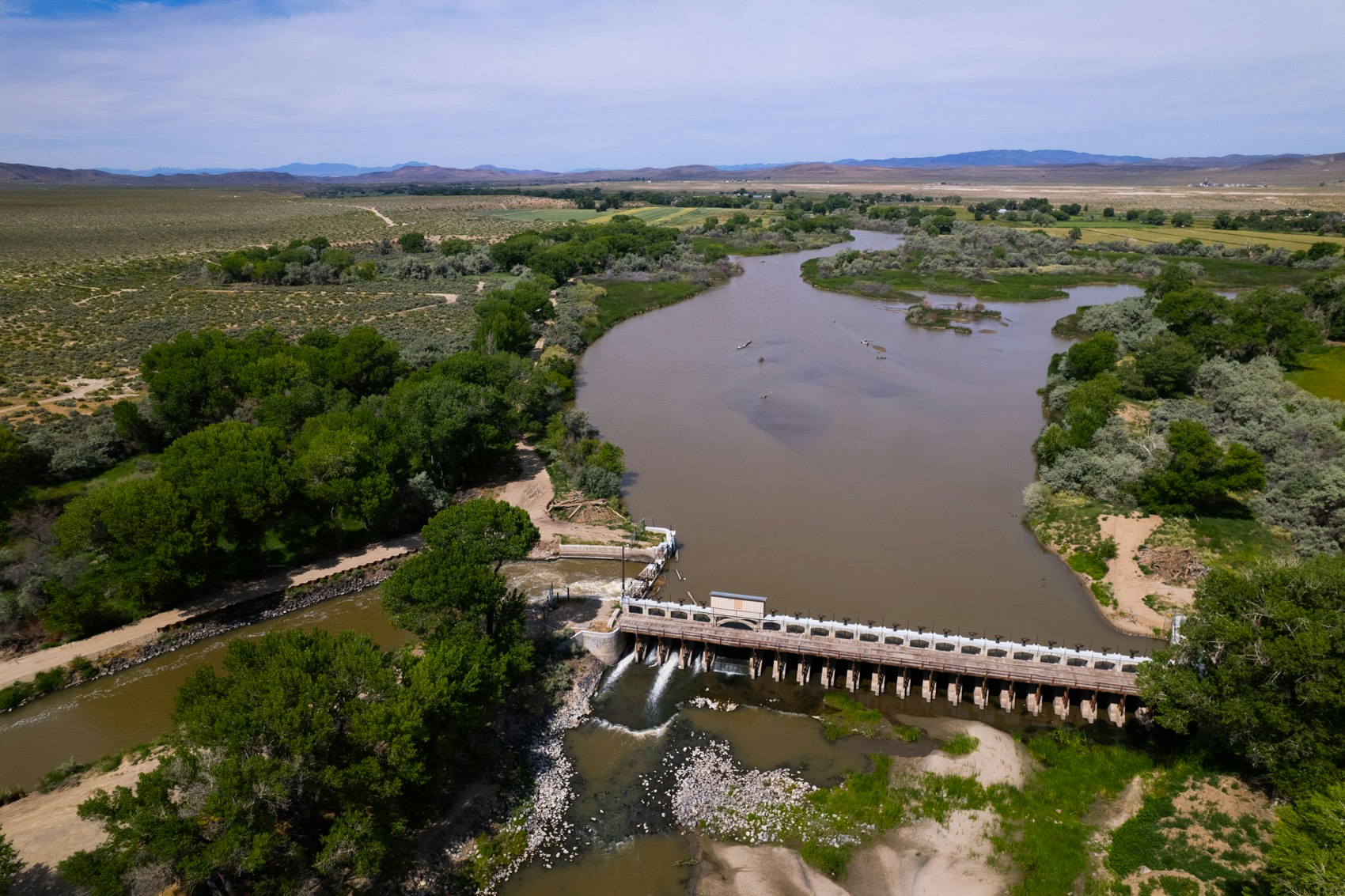Carson River Diversion Dam
Carson Diversion Dam is located on the Carson River approximately 5 miles below Lahontan Dam. It is a concrete structure 23 feet high and 241 feet long and boasts 21 double leaf slide 5-by-10-foot (1.5 m × 3.0 m) spillway sections. It is used to divert water into two main canals for irrigation of lands in the Carson Division of the Newlands Project.

The Carson River Diversion Dam is an original feature of the Newlands Project, one of the first five projects authorized and built under the Reclamation Act of 1902. With passage of the act, the Federal government assumed a major role in designing and constructing large-scale irrigation projects throughout the West. The Carson River Diversion Dam is part of the network of water storage, diversion, and conveyance structures that provides water for irrigating about 73,000 acres of farmland. Built in 1904-05, the Carson River Diversion Dam is a low concrete dam that diverts water from the Carson River into two main project canals, the Southside Main Canal ("V" Line) and the Northside Main Canal ("T" Line). The Carson River Diversion Dam was individually listed as part of a thematic resource nomination for the Newlands Project.
In 1981, it was listed on the National Register of Historic Places.
